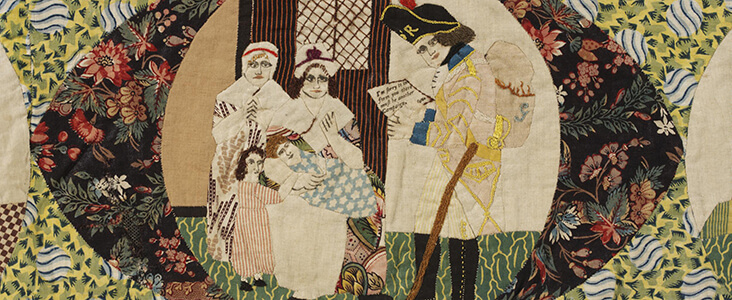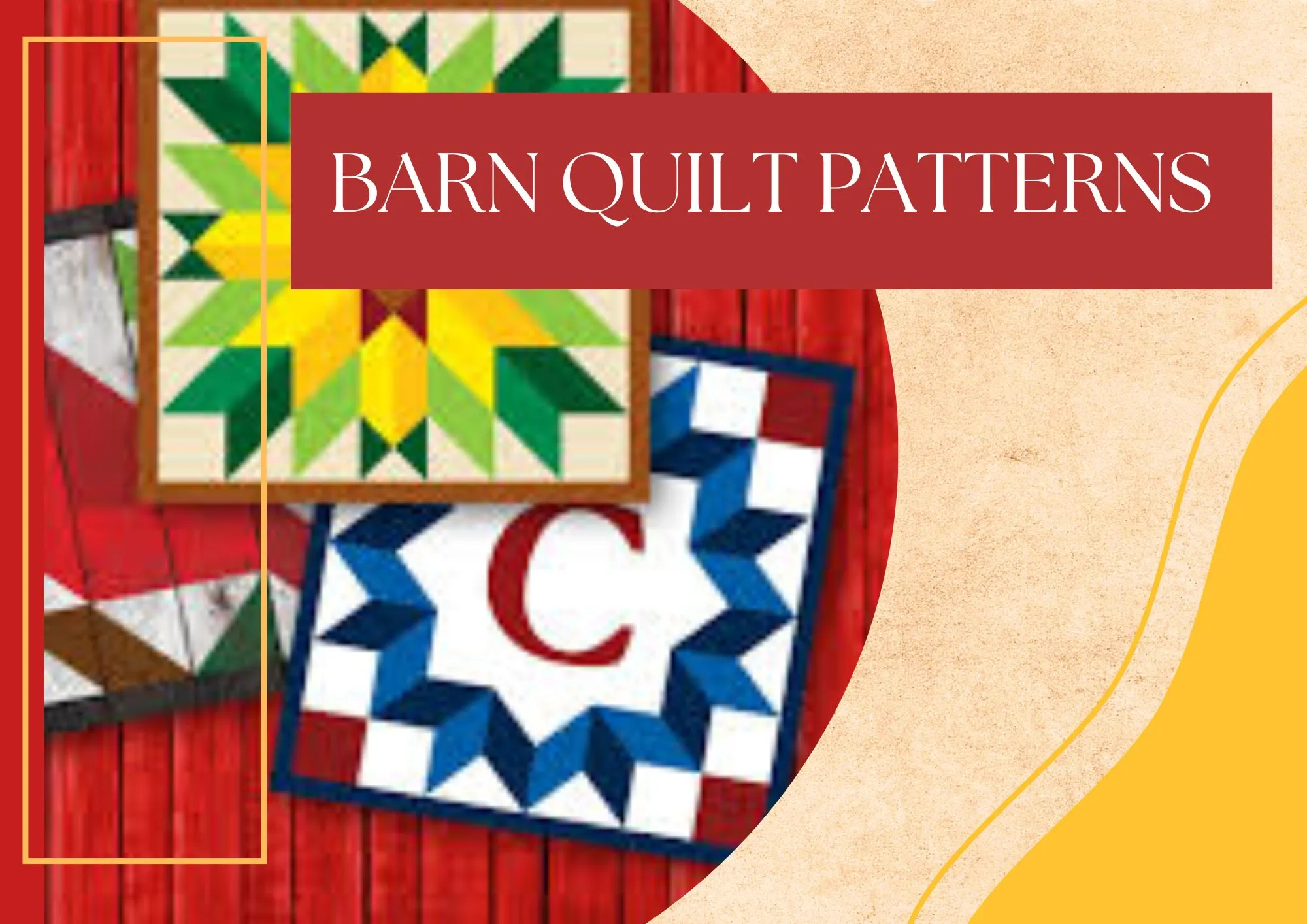Patchwork History: Quilting’s Colorful Legacy Revealed
Patchwork History: Unraveling the Rich Heritage of Quilting is a fascinating exploration of the origins and cultural significance of quilting. Delving into the intricate art form, this article uncovers the historical roots and evolution of quilting across different cultures and time periods.
From its humble beginnings as a practical necessity to its transformation into a cherished craft, quilting has played a vital role in preserving traditions and stories. Join us on this journey as we unravel the diverse tapestry of quilting and gain a deeper appreciation for the skill and creativity behind this timeless art form.

Credit: blog.fabrics-store.com
The Origins Of Quilting
Delve into the rich heritage of quilting through the captivating history of patchwork. The origins of quilting date back centuries, showcasing a tradition steeped in artistry and cultural significance.
Ancient Beginnings
Quilting has a rich history that dates back centuries.
It is believed to have originated in ancient Egypt.
Early quilts were made for warmth and as protective covers.
Cultural Significance Across Continents
Quilting has cultural significance worldwide.
Various regions have unique quilting traditions and styles.
Quilts often reflect the history and heritage of a community.

Credit: www.amazon.com
Evolution Of Quilting Techniques
Quilting techniques have evolved over time, with patchwork holding a significant place in its rich heritage. Through centuries, quilters have refined their methods, incorporating new fabrics and designs, resulting in a diverse tapestry of quilting techniques that continue to captivate enthusiasts worldwide.
Hand-stitching To Machine Quilting
Quilting has come a long way from its humble beginnings as a purely hand-stitched craft. Traditionally, quilters would meticulously sew each piece of fabric together by hand, using needle and thread. This labor-intensive process required great skill and patience, resulting in beautifully crafted quilts that showcased the quilter’s expertise.
However, with the advent of technology, the art of quilting has evolved significantly. Machine quilting has revolutionized the way quilts are made, making the process faster and more efficient. Quilters now have the option to use sewing machines equipped with specialized quilting features, allowing them to create intricate designs and stitch patterns with ease.
Machine quilting not only saves time but also opens up a world of possibilities in terms of design. Quilters can now experiment with different stitch patterns, from simple straight lines to elaborate free-motion quilting. This innovation has made quilting more accessible to a wider audience, encouraging more people to take up the craft and explore their creativity.
Innovations In Patterns And Designs
As quilting techniques evolved, so did the patterns and designs used in quilts. From traditional geometric patterns to whimsical appliqué designs, quilters have continuously pushed the boundaries of creativity.
One of the key innovations in quilting patterns is the introduction of paper piecing. This technique involves sewing fabric pieces onto a paper foundation, allowing quilters to create precise and intricate designs that would be challenging to achieve with traditional piecing methods.
Another significant development in quilting designs is the rise of modern quilting. Modern quilts often feature bold and unconventional designs, using vibrant colors and negative space to create visually striking compositions. This contemporary approach to quilting has attracted a new generation of quilters, infusing the craft with fresh ideas and innovative techniques.
| Evolution of Quilting Techniques |
|---|
| Hand-Stitching |
| Machine Quilting |
| Innovations in Patterns and Designs |
- Hand-stitching was the traditional method of quilting.
- Machine quilting revolutionized the craft, making it faster and more accessible.
- Innovations in patterns include paper piecing and modern quilting.
- Hand-stitching required great skill and patience.
- Machine quilting allows for intricate designs and stitch patterns.
- Paper piecing and modern quilting have expanded the range of quilting designs.
Quilting As A Form Of Storytelling
Discover the art of quilting as a form of storytelling through the rich heritage of patchwork history. Unravel the intricate tales woven into each quilt, reflecting tradition and culture in every stitch.
Narratives Woven Into Fabrics
Quilting is not just a craft but a form of storytelling, with narratives woven into fabrics. Quilts are made with various materials, such as cotton and silk, and are often embellished with intricate patterns and designs. Each quilt tells a unique story, reflecting the cultural and historical influences of the time and place in which it was created. The colors, patterns, and symbols used in quilts convey emotions, experiences, and memories. They are a testament to the creativity and ingenuity of the human spirit.Quilts As Historical Documents
Quilts also serve as historical documents, providing a glimpse into the lives of those who made them. Quilts were often made by women who were not able to read or write, and thus, quilting became a means of expressing themselves and documenting their experiences. Quilts were also used to commemorate important events, such as weddings, births, and deaths. They were passed down from generation to generation, preserving the stories and memories of those who came before us. In conclusion, quilting is more than just a hobby or a craft, it is a form of storytelling. Quilts tell stories of the past, present, and future. They are a testament to the human spirit and the creativity and ingenuity of women throughout history. As we continue to quilt and create, we carry on the legacy of those who came before us, and we add our own stories to the rich tapestry of quilting history.
Credit: sewnscissors.com
The Social Fabric Of Quilting
Quilting has long been intertwined with the social fabric of communities, serving as a means of connection, expression, and empowerment. From quilting bees that brought people together to the use of quilts as powerful political statements, the history of quilting is a testament to its role in shaping the social landscape.
Quilting Bees And Community Building
Quilting bees were more than just gatherings to work on quilts; they were vibrant social events that brought together individuals from diverse backgrounds. These gatherings fostered a sense of community, offering a space for sharing stories, traditions, and skills. Through the act of quilting, bonds were formed, friendships were nurtured, and the fabric of society was woven tighter.
Quilts And Political Statements
Quilts have often served as powerful platforms for expressing political and social viewpoints. From the abolitionist movement to women’s suffrage and civil rights, quilts have been used to convey messages of unity, resistance, and hope. Through intricate patterns and symbolic imagery, quilters have made bold statements, sparking conversations and inspiring change within their communities and beyond.
Iconic Quilts And Their Makers
Unveiling the rich heritage of quilting, “Iconic Quilts and Their Makers” showcases the history of patchwork. From the intricate designs of the Amish community to the bold patterns of Gee’s Bend, this book celebrates the artistry and tradition of quilting.
Famous Quilts That Made History
Iconic quilts have a way of capturing the hearts of people and becoming a part of history. The Underground Railroad quilt, for instance, was used by slaves to communicate secret messages about their escape plans. The AIDS Memorial Quilt, on the other hand, is a poignant tribute to those who lost their lives to the disease. Another famous quilt is the Dear Jane quilt, made by Jane Stickle during the American Civil War. The intricate design and precise piecing of the quilt have made it a beloved masterpiece among quilters and historians alike.Profiles Of Renowned Quilters
The quilting world has seen many talented and accomplished quilters over the years. One such quilter is Harriet Powers, a former slave who created intricate story quilts that depicted the Bible and African American folklore. Another famous quilter is Gee’s Bend resident Annie Mae Young, whose improvisational quilts have been featured in museums and galleries worldwide. Other notable quilters include Faith Ringgold, who is known for her narrative quilts that address social and political issues, and Jinny Beyer, who is renowned for her expert use of color and intricate designs. These quilters have not only contributed to the craft of quilting but have also left a lasting impact on history and society.Quilting In Modern Times
Quilting in modern times reflects a blend of tradition and innovation.
The Resurgence Of Quilt Making
Quilting has made a comeback as a popular pastime.
Quilting As Contemporary Art
Quilting has evolved into a recognized form of artistic expression.
The Global Quilting Scene
The Global Quilting Scene is a vibrant tapestry of diverse traditions and artistic expressions that have woven a rich heritage across cultures and continents. From the intricate patterns of Japanese sashiko to the bold, geometric designs of African American quilts, the global quilting community offers a kaleidoscope of creativity and storytelling. Let’s take a closer look at the Quilting Traditions Around the World and the International Quilt Shows and Exhibits that showcase the extraordinary craftsmanship of quilters worldwide.
Quilting Traditions Around The World
Quilting traditions around the world offer a captivating glimpse into the cultural heritage and artistic ingenuity of different societies. In India, the art of kantha stitching has been passed down through generations, creating stunning embroidered quilts with intricate motifs and vibrant colors. Meanwhile, the Amish quilting tradition in the United States is characterized by meticulous hand quilting and striking geometric patterns, reflecting the community’s commitment to simplicity and tradition.
International Quilt Shows And Exhibits
International Quilt Shows and Exhibits provide a global platform for quilters to showcase their extraordinary craftsmanship and creativity. Events such as the Tokyo International Great Quilt Festival in Japan and the Festival of Quilts in Birmingham, UK, bring together quilting enthusiasts from around the world to celebrate the art form. These exhibitions offer a unique opportunity to admire the intricate details of quilts, gain inspiration from diverse quilting styles, and connect with fellow enthusiasts on an international scale.
Preserving The Legacy Of Quilting
Quilting is more than just a craft—it’s a tradition that weaves together stories, artistry, and heritage. Preserving this legacy is essential to honor the rich history of quilting and ensure it continues to thrive for generations to come.
Museums And Collections
Discovering quilting’s past is made possible through museums and collections dedicated to showcasing the beauty and significance of quilts. These institutions serve as guardians of history, preserving and displaying quilts that tell tales of bygone eras.
Passing On The Craft To Future Generations
Ensuring the art of quilting endures involves passing on the craft to young minds. By teaching children and future generations the skills and importance of quilting, we pave the way for its continued practice and appreciation.
Conclusion
In this blog post, we’ve journeyed through the captivating history of quilting, discovering its cultural significance and enduring appeal. From its humble origins to its contemporary resurgence, quilting has woven itself into the fabric of human creativity. As we cherish this timeless craft, let’s continue to celebrate its rich heritage and enduring legacy.
